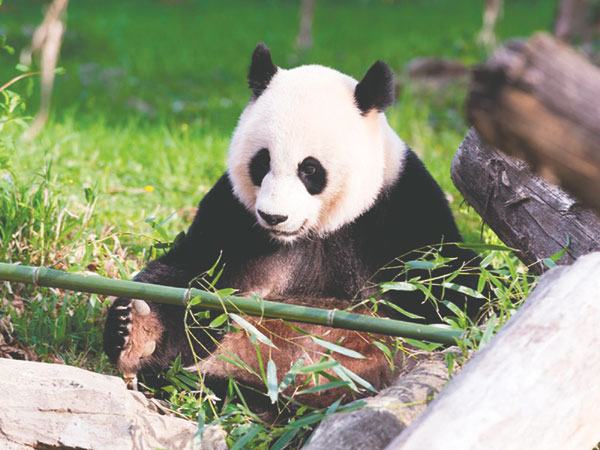 |
|
Mei Xiang, a female giant panda at the National Zoo in Washington, is expected to be artificially inseminated in the next two weeks with frozen semen transported from China. [Connor Mallon / Smithsonian's National Zoo] |
"This is the first time we've imported semen from China for panda breeding," said Dennis Kelly, director of the zoo.
Caitlin Burrell, a research scientist at the Smithsonian Conservation Biology Institute (SCBI), arrived at Dulles International Airport on April 20 with frozen panda semen from China.
"Getting the sperm here was a huge endeavor," said Dr Copper Aitken-Palmer, a veterinarian at SCBI. "It sets a nice precedent, because it really has never happened here in the United States before. It opens up a lot of possibilities."
The sperm sample was taken from Hui Hui, a nine-year-old male giant panda who lives at the China Research and Conservation Center for the Giant Panda in Wolong, Sichuan province. The sample was frozen and stored at the Bifengxia Giant Panda Base's cryopreservation bank.
Having traveled 7,000 miles from Chengdu to Washington, the sample is now preserved in the SCBI's cryopreservation bank at the National Zoo. It may later be used to artificially inseminate Mei Xiang, the Zoo's 16-year-old female giant panda.
"I want to thank everyone involved, including the US Fish and Wildlife Service, China's state Forestry Administration, and our own team of panda scientists, who made this transport possible," Kelly said.
Mei Xiang came to the National Zoo through a cooperative research and breeding agreement between the zoo and the China Wildlife Conservation Association in January 2011.
With Tian Tian, a male giant panda, Mei Xiang has produced two cubs?- Tai Shan and Bao Bao. A cub sired by Hui Hui would be more valuable to the gene pool than those sired by Tian Tian, because Hui Hui hasn't sired any cubs yet, according to the zoo.
Mei Xiang is expected to go into estrus for 24 to 72 hours in the next week or two, 45 to 50 days after she was separated from her cub Bao Bao, according to the zoo's panda team. Then the artificial insemination procedure will take place.
Scientists from the National Zoo have traveled around the world to prepare for this year's panda breeding season. Based on analysis of the best genetic matches, SCBI scientist Jon Ballou made the breeding recommendations. Scientists hope to grow the population of giant pandas living under human care from 392 to 500.
In the past 20 years, the National Zoo has raised the success rate of panda breeding in captivity from 20 percent to 80 percent.
Experts from China and the US have worked together on the reproduction of giant pandas, and studied their diseases so they can put pandas back into the wild later in life.
Born in Washington, Tai Shan, the first cub of Mei Xiang and Tian Tian, now lives in China. Their second cub, Bao Bao, will also leave for China when she reaches four years old, a common practice.
"Chinese experts are much more experienced than we are, and we tend to learn from each other every day," Kelly told China Daily.
He said the Zoo has worked on many scientific cooperative projects with China for decades, and would continue to collaborate with China on giant panda breeding.
Liu Xiaoxian in Washington contributed to this story.